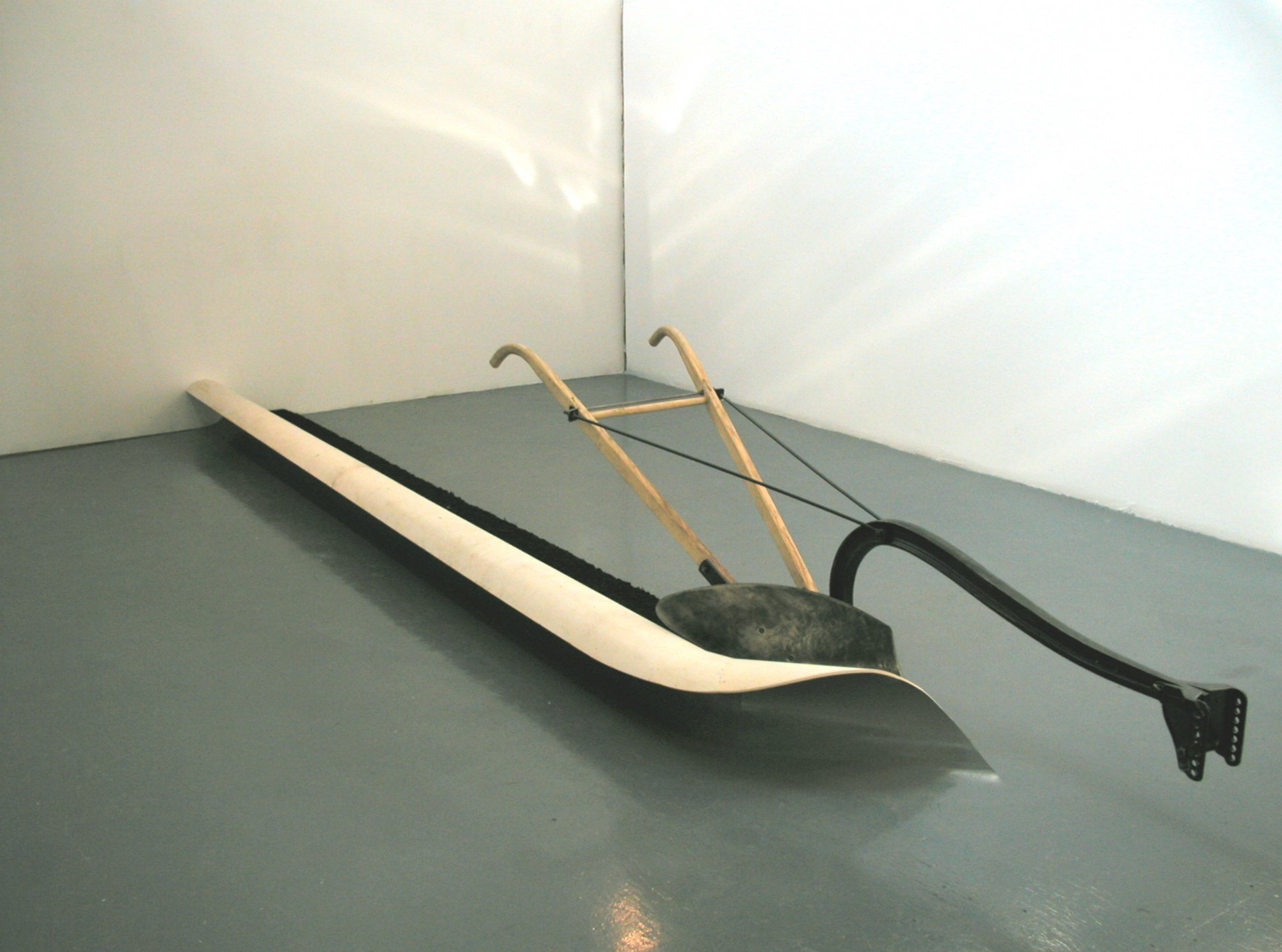Project for a Mall
steel, wood, soil
4’ x 3’ x 20’
2002
The Agricultural Land Reserve was an initiative of the NDP government of British Columbia in 1973, to preserve prime agricultural land from urban development. Nearly 5 million hectares were set aside. Despite attempts by subsequent governments to undermine the basic intention of the ALR, it remains in effect.
The building of malls, golf courses and residences on land removed from the Agricultural Land Reserve has significantly reduced available farmland in the Fraser River delta. Agricultural land comprises 5% of BC land; only 1% of the province is prime agricultural land, such as Big Bend on the Fraser River, with some of the richest soil in Canada. Provincially appointed commissioners of the Agricultural Land Commission rule on applications to have land removed from the ALR for development or other purposes. Loss of viable agricultural land means greater dependence on imported agricultural foodstuffs, facilitated by the North American Free Trade Agreement.


A single-bottom walking plow tears up a surface, cutting back to the agricultural soil beneath. While the work suggests an allegory of resistance and reclamation, it is true that the 19th century single-bottom steel plow, capable of turning the thick buffalo-grass turf of the North American prairies, was to some degree responsible for the North American dust-bowls of the 30s, when insufficient ground-cover was left to prevent severe wind erosion, removing millions of tons of topsoil and leading to a wide-spread agricultural collapse on the high plains.
Small-hold labour-intensive market farming still typical of the Fraser Valley is juxtaposed with expansive suburban malls several acres in size. Limited production continues alongside unimpeded consumption; in the mall grocery store, hothouse vegetables trucked from California and Mexico are available a short drive from local produce.
